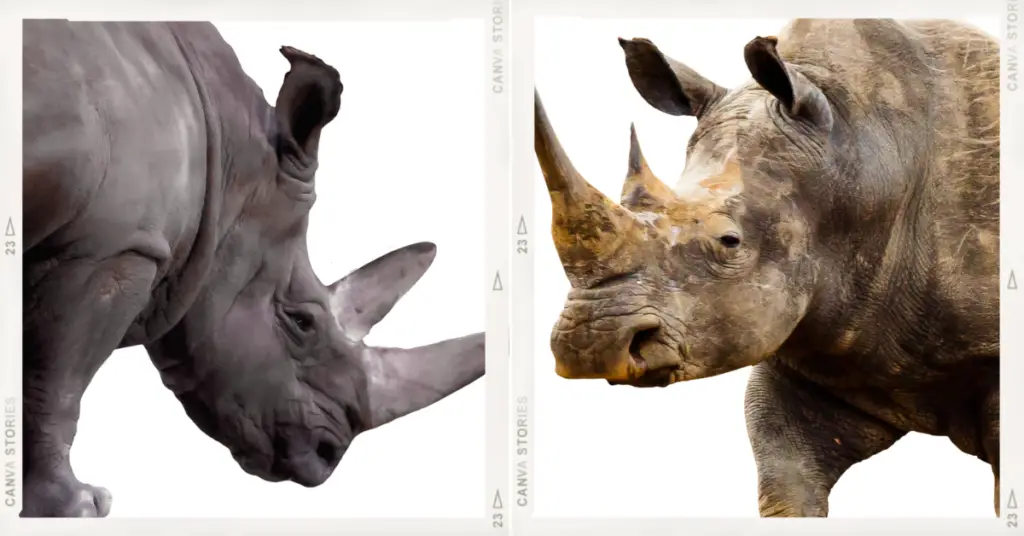Since the white rhino evolved from the black rhino, they have a similar appearance. The biggest difference among the black and white rhinos is in the shape of the neck and the mouth.
White rhinos have broad, flat lips 20 cm wide for grazing and the head cannot be lifted above the back. The upward swivel of the head is prevented by the first neck vertebra which has an elongated upper anterior end that interlocks with the skull bone.
Black rhinos have long, pointed, hooked upper lips for browsing foliage and can lift head well above back and shoulder height to achieve treetop navigation.
The white rhino has pointed ears compared to the round ears of the black rhino and it has a high, arched back while that of the black rhinoceros is relatively flat.
Body color has no relation to the names white and black because rhinos like to roll in mud baths and the body takes on the color of the ground.
Recent rhinos have only six molars, the incisors and canine teeth of their ancestors and the rudimentary tusks of the early Dicerorhinus having been lost. Adult white rhinos have an average shoulder height of 165 to 175 cm and a maximum mass of 2,400 kg. Bulls are 30% larger than cows; this differs from the black rhino where the cows are the largest.
White rhinos are 40% bigger than black rhinos and have longer heads. The skin of both is up to 20 mm thick on the back and thighs and up to 50 mm on the forehead.
There are small differences between the southern and northern white rhino subspecies. The latter has a shorter body and legs. The skin of the southern morph contains harsh, pin-shaped, sparse hairs that are absent from the northern morph. The dorsal surface of the skull of the northern subspecies is flatter than that of the southern subspecies, and the molars have smaller crowns.

Erzsebet Frey (Eli Frey) is an ecologist and online entrepreneur with a Master of Science in Ecology from the University of Belgrade. Originally from Serbia, she has lived in Sri Lanka since 2017. Eli has worked internationally in countries like Oman, Brazil, Germany, and Sri Lanka. In 2018, she expanded into SEO and blogging, completing courses from UC Davis and Edinburgh. Eli has founded multiple websites focused on biology, ecology, environmental science, sustainable and simple living, and outdoor activities. She enjoys creating nature and simple living videos on YouTube and participates in speleology, diving, and hiking.
🌿 Explore the Wild Side!
Discover eBooks, guides, templates and stylish wildlife-themed T-shirts, notebooks, scrunchies, bandanas, and tote bags. Perfect for nature lovers and wildlife enthusiasts!
Visit My Shop →
